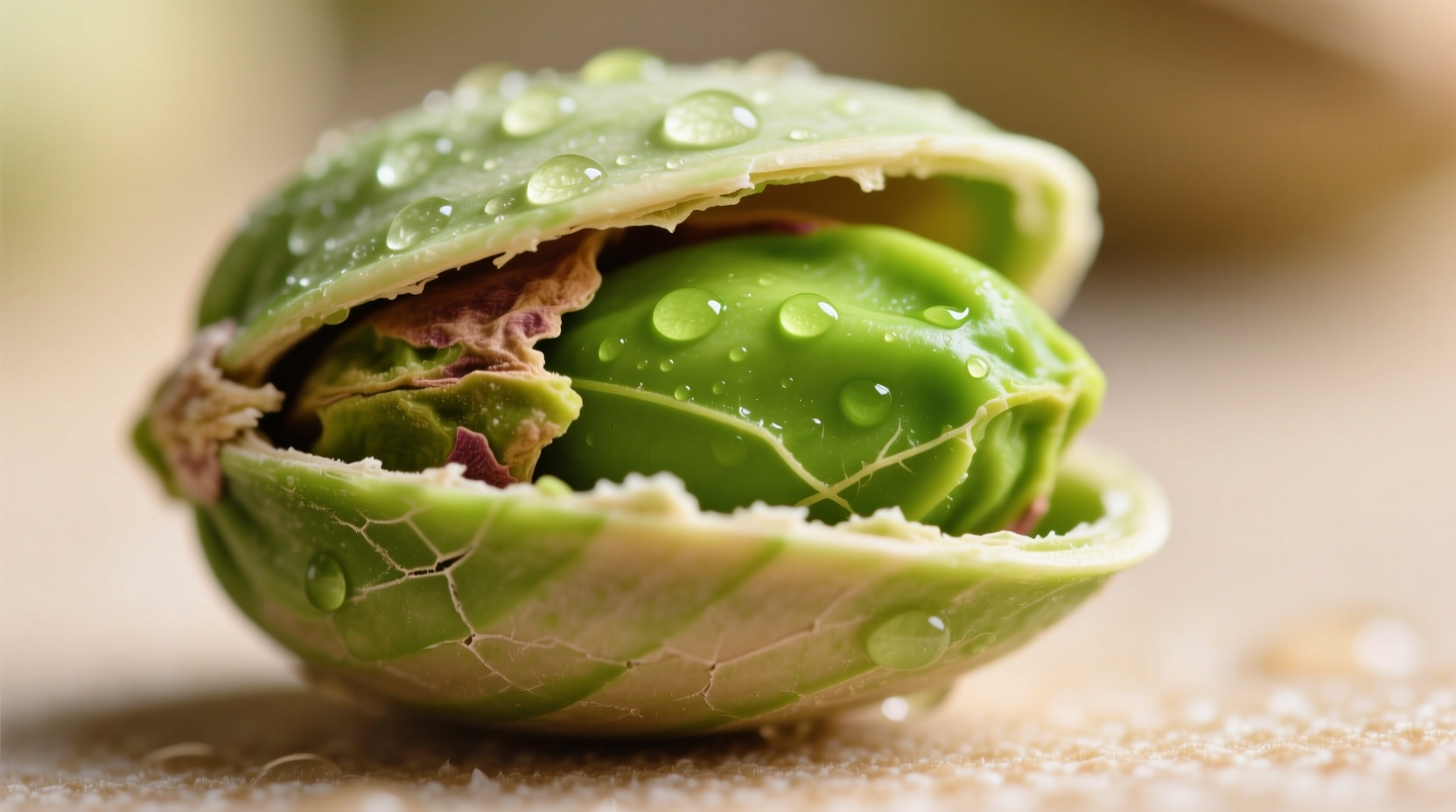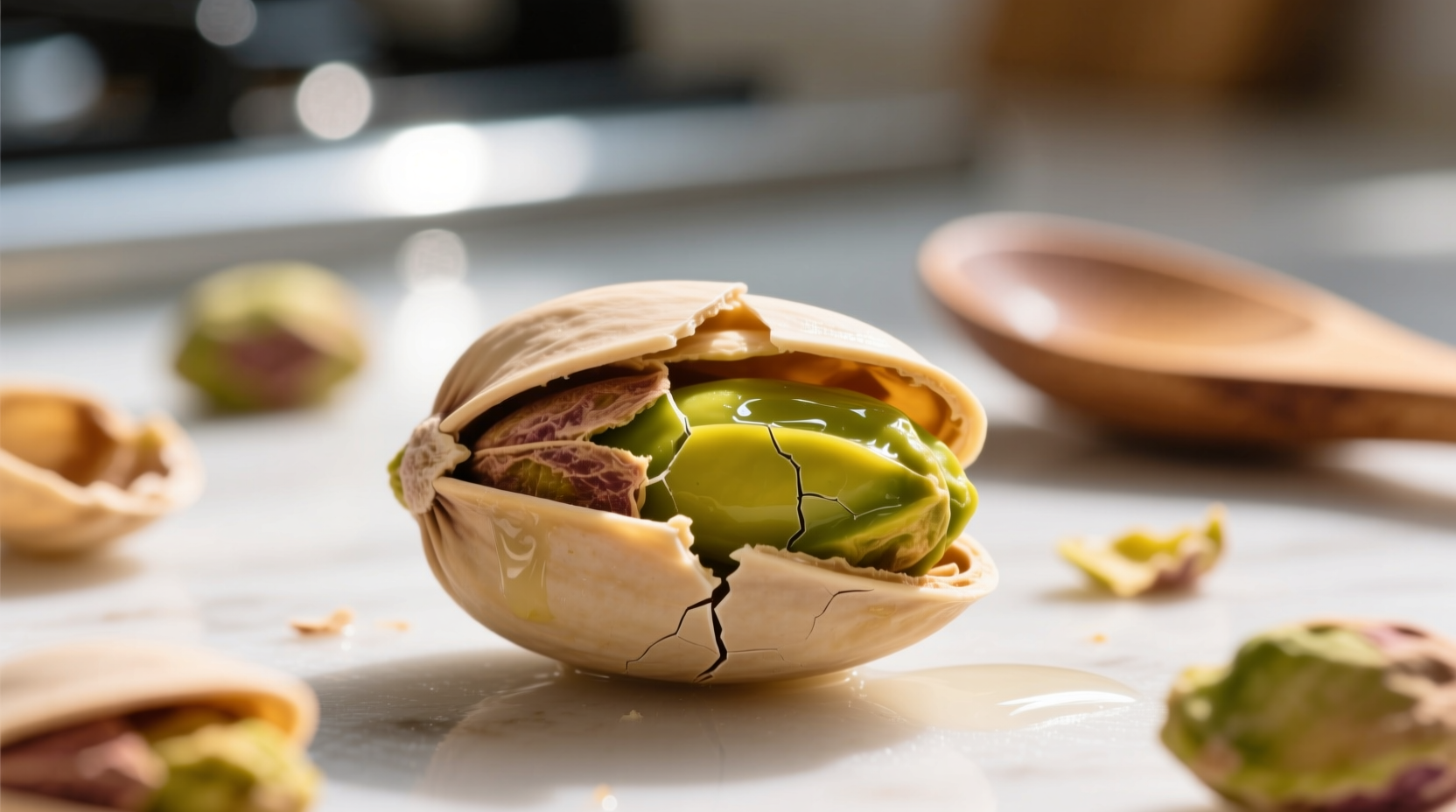Pistachios deliver a uniquely balanced flavor profile—mildly sweet with earthy, nutty notes, subtle buttery richness, and a natural hint of saltiness. Their distinctive taste combines gentle sweetness (about 10% natural sugars) with grassy undertones and a clean finish, setting them apart from other tree nuts. Fresh pistachios offer a vibrant green hue that directly correlates with their chlorophyll-rich flavor complexity.
Ever wondered what makes pistachios stand out in your trail mix or pesto? That distinctive taste isn't accidental—it's the result of careful cultivation and natural chemistry. Whether you're a home cook experimenting with new recipes or simply curious about your favorite snack, understanding pistachio flavor unlocks better culinary decisions. Let's explore exactly what gives pistachios their signature taste and how to maximize that flavor in your kitchen.
The Science Behind Pistachio Flavor
Unlike walnuts or pecans with their pronounced bitterness, pistachios contain lower levels of tannins—those compounds responsible for astringent notes in many nuts. This biochemical difference creates their remarkably smooth profile. According to USDA agricultural research, pistachios' unique flavor stems from their specific fatty acid composition, with oleic acid comprising 50-60% of their fat content. This monounsaturated fat delivers that characteristic buttery mouthfeel without overwhelming richness.
Food scientists at the University of California Davis have identified over 30 volatile compounds contributing to pistachio aroma. The most significant? 3-methylbutanal (providing malty notes) and hexanal (delivering green, grassy elements). These compounds work together to create pistachios' complex sensory experience that evolves as you chew.

Texture's Role in Flavor Perception
That satisfying crunch isn't just enjoyable—it's crucial to pistachio's flavor experience. The ideal pistachio kernel maintains 3-5% moisture content, creating the perfect balance between crispness and slight chewiness. When roasted properly (at 120-130°C), the Maillard reaction develops new flavor compounds while preserving the nut's delicate structure.
Compare this to other popular nuts:
| Nut Type | Moisture Content | Texture Profile | Flavor Impact |
|---|---|---|---|
| Pistachio | 3-5% | Firm yet yielding crunch | Enhances subtle sweetness |
| Almond | 4-6% | Hard, dense crunch | Accentuates bitterness |
| Cashew | 5-7% | Softer, buttery give | Increases perceived richness |
| Walnut | 2-4% | Brittle, crumbly break | Releases bitter compounds |
How Processing Changes Pistachio Flavor
That little "smile" on the shell isn't just charming—it indicates natural ripening that concentrates flavor compounds. But what happens after harvest significantly impacts taste:
- Raw pistachios showcase the purest expression of their natural flavor—grassy, slightly sweet, with herbal notes reminiscent of fresh peas
- Dry-roasted versions develop deeper nuttiness through caramelization while maintaining clean flavor
- Oil-roasted pistachios absorb cooking oil flavors, which can mask subtleties
- Salted varieties enhance natural sweetness through flavor contrast (the science behind why salt makes sweet things taste sweeter)
Agricultural studies show that pistachios roasted at lower temperatures (120°C for 15 minutes) preserve 40% more volatile flavor compounds compared to high-heat methods. This explains why artisanal roasters often use slower, cooler techniques to maintain complexity.
Regional Flavor Variations You Should Know
Not all pistachios taste the same—geography dramatically influences flavor. Iranian pistachios (often called "Kalleh Ghouchi") deliver the most pronounced sweetness with floral undertones. American-grown pistachios (primarily from California) feature brighter, grassier notes. Turkish varieties strike a balance with moderate sweetness and pronounced earthiness.
These differences stem from soil composition and climate:
- California pistachios: Grown in alkaline soils, develop higher levels of chlorophyll (that vibrant green color) and more pronounced vegetal notes
- Iranian pistachios: Benefit from dramatic temperature swings between day and night, concentrating natural sugars
- Syrian pistachios: Known for their larger size and milder flavor profile due to higher oil content
When Pistachio Flavor Shines (and When It Doesn't)
Understanding pistachio's flavor boundaries prevents culinary missteps. Their delicate profile excels in:
- Cold preparations like pesto and ice cream where heat won't degrade volatile compounds
- Sweet applications where their natural 10% sugar content complements desserts
- Fresh applications within 3 months of harvest when chlorophyll compounds are most vibrant
But avoid using older pistachios in:
- High-heat cooking that degrades delicate flavor compounds
- Strongly spiced dishes where their subtlety gets overwhelmed
- Long-term storage applications (beyond 6 months) when oxidation creates off-flavors
Maximizing Pistachio Flavor in Your Kitchen
Professional chefs use these science-backed techniques to extract maximum flavor:
- Toast gently: 10 minutes at 120°C preserves volatile compounds better than high-heat methods
- Grind just before use: Releases flavor compounds that quickly oxidize (use a food processor, not blender)
- Pair with acid: Lemon or vinegar brightens natural sweetness (try pistachio-lemon cookies)
- Balance salt carefully: 0.5% salt by weight maximizes flavor contrast without overpowering
For the most vibrant flavor experience, choose pistachios with shells that open naturally ("smiling" pistachios) and kernels with consistent green color—brown streaks indicate oxidation and flavor degradation.
How Pistachio Flavor Compares to Other Nuts
Understanding these flavor relationships helps you make smart substitutions:
- Almonds taste significantly more bitter due to higher amygdalin content—use 25% more sugar when substituting in recipes
- Cashews have higher starch content creating creamier texture but less complex flavor—better for sauces than flavor-forward applications
- Pine nuts share pistachios' green notes but with resinous undertones that can turn bitter quickly
- Walnuts contain juglone (a natural compound that creates bitterness)—pistachios offer similar nutritional benefits without the bitter aftertaste
Food pairing studies show pistachios complement fruit flavors particularly well—their mild sweetness enhances berries without competing, unlike stronger nuts that can dominate delicate fruits.
Recognizing Quality Through Flavor
Your taste buds can detect quality differences. Premium pistachios deliver:
- A clean finish without lingering bitterness (indicates proper harvesting)
- Noticeable but subtle sweetness (not cloying)
- Grassy, herbal notes that dissipate cleanly
- No stale or cardboard-like aftertaste (sign of oxidation)
According to sensory analysis from the International Nut and Dried Fruit Council, the best pistachios maintain a flavor balance where no single note dominates—sweetness, nuttiness, and earthiness exist in perfect equilibrium. This balance disappears in lower-quality nuts where one characteristic overwhelms the others.











 浙公网安备
33010002000092号
浙公网安备
33010002000092号 浙B2-20120091-4
浙B2-20120091-4